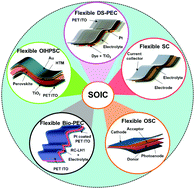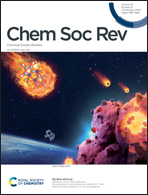Flexible energy generation and storage devices: focus on key role of heterocyclic solid-state organic ionic conductors
Abstract
An evolving trend toward the ever-growing market of portable and wearable electronics has accelerated development in the construction of multifunctional energy generation and storage systems that can be twisted and folded to multiple deformations while retaining their electrochemical performance. The latest advances and well developed approaches for the design of heterocyclic solid-state organic ionic conductors (SOICs) in flexible energy generation and storage devices are discussed here. The development of SOICs with improved physical, optical, and electrochemical properties provides new prospects for flexible photoelectrochemical cells and supercapacitors. Equipped with a better knowledge of SOICs’ multifunctional properties, researchers have made considerable progress in their development that allows modification according to the requirements of different types of flexible energy devices. Within this review, we highlight the design of efficient SOICs and their incorporation into flexible energy generation and storage devices, and address exciting instances that profile the multifunctionality of SOICs such as three-dimensional (3D) ionic channels, excellent thermal stability, dual functionality (hole/ions transportation), one-dimensional (1D) lamellar network, light-harvesting, and non-toxicity to mention a few. It is expected that innovative and customizable properties utilized in the development of multifunctional SOICs will provide a forum for future advancement in flexible and wearable energy generation and storage devices.



 Please wait while we load your content...
Please wait while we load your content...